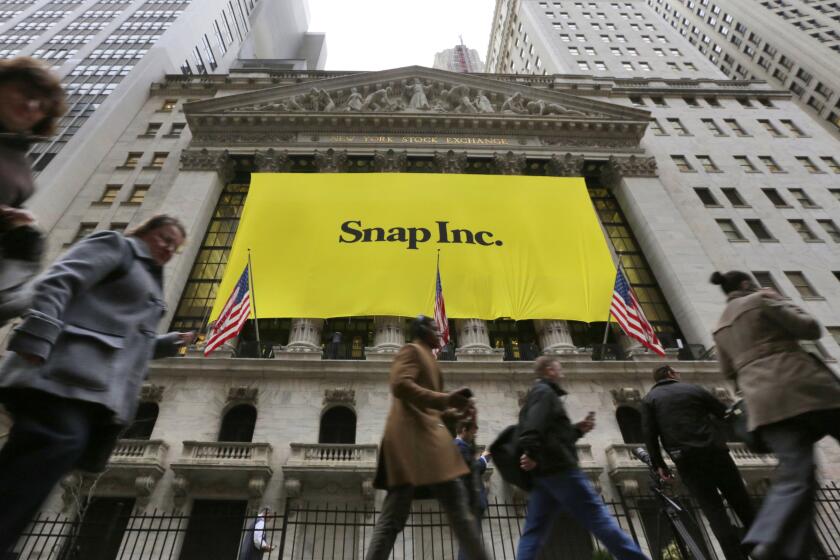In Rhapsody Over Mac’s NextStep
Apple’s hope for your future has just arrived. Or at least the first hopeful draft. After 10 months of furious development, Apple recently released the developer version of the Rhapsody OS, widely seen as central to the company’s survival.
Rhapsody combines the power of the NextStep OS--acquired with Steve Jobs’ Next Computer company late last year--with the Mac’s friendly familiarity. The developer release is an unfinished version that allows the people who write software to get to work before Rhapsody becomes commercially available next year. The worst thing that can happen to any new operating system is a dearth of applications to run on it.
Apple paid $400 million for NextStep. Did it get its money’s worth? I’ve been playing around with Rhapsody, and so far I’m impressed. Its look and feel lean toward the Mac OS 8--the same old finder, desktop, windows and scroll bars and similar icon management. It borrows NextStep’s superior file manager, so navigating through large hierarchies has improved.
More important, Rhapsody has already fixed two of the most vexing problems Mac users face daily: Protected memory prevents a crash of Microsoft Word (or any other program) from bringing your system to its knees (you simply relaunch Word without restarting your Mac), and preemptive multi-tasking supports the most frenetic work habits.
You can, for example, print, send a fax, copy to a floppy and edit a spreadsheet simultaneously rather than serially.
Rhapsody also stores user profiles on a central server; this lets you call up your personal desktop instantly from any machine connected to your network. It improves multiprocessing (operating two or more CPUs simultaneously), a critical feature for professional publishers and for servers. And Rhapsody’s industrial-strength encryption can evade those prying eyes. Although most users don’t need such high-end features, it gives those who do a viable alternative to Windows NT.
A key problem for Apple has been the defection of software developers to Windows. Rhapsody should help there because it offers an easier environment for creating new applications. (I’ve never programmed in my life, but still built a simple text editor in minutes.)
Moreover, Rhapsody applications can be moved easily to Windows NT, Windows 95 and the Mac OS--so software companies can stay in the Apple fold without leaving most of their money on the table.
All of this, Apple hopes, will keep the Mac connected to the rest of computing. “The Mac can’t survive on an island,” says Bruce Berkoff, marketing manager for Umax Computer, the last remaining clone maker. “Rhapsody is a bridge to that island.”
Rhapsody will also run on Intel-based PCs. Do Apple executives think computer makers or Windows users will choose Rhapsody over Windows? If so, they need a kind of professional help not normally available in the computer industry.
*
So why create Rhapsody on Intel? It’s partly a hedge against the future of PowerPCs--the CPUs that power the Mac. Given Apple’s shrinking market share and its recent act of infanticide on the clone industry, the company can’t necessarily depend on aggressive PowerPC development from IBM and Motorola, the chip’s makers. Despite its blazing speed, PowerPC’s days may be numbered.
If Rhapsody is so great, should you buy it as soon as it’s available? Probably not. Apple once said that Rhapsody would replace the Mac OS outright; today’s line is that the two systems will coexist indefinitely, not unlike Windows 95 and NT. (Microsoft has been trying to migrate Windows users to NT for years, with only modest success.)
That’s because Rhapsody (like NT) requires beefier, more expensive computers. Apple is pitching Rhapsody as an OS for servers and media professionals, so don’t expect a flood of Rhapsody games and productivity software for a while.
Old Mac applications will run on a Rhapsody system, but sometimes they’ll take a performance hit, and they won’t take advantage of most of Rhapsody’s modern benefits. And there will inevitably be loads of peripherals and software that don’t quite mesh with Rhapsody--it could take years to iron out all the conflicts and incompatibilities.
The majority of users won’t want Rhapsody for two to five years or longer. So what does it represent to most of us? A bridge. Now Apple just needs to walk across.
*
Charles Piller can be reached via e-mail at cpiller@aol.com



